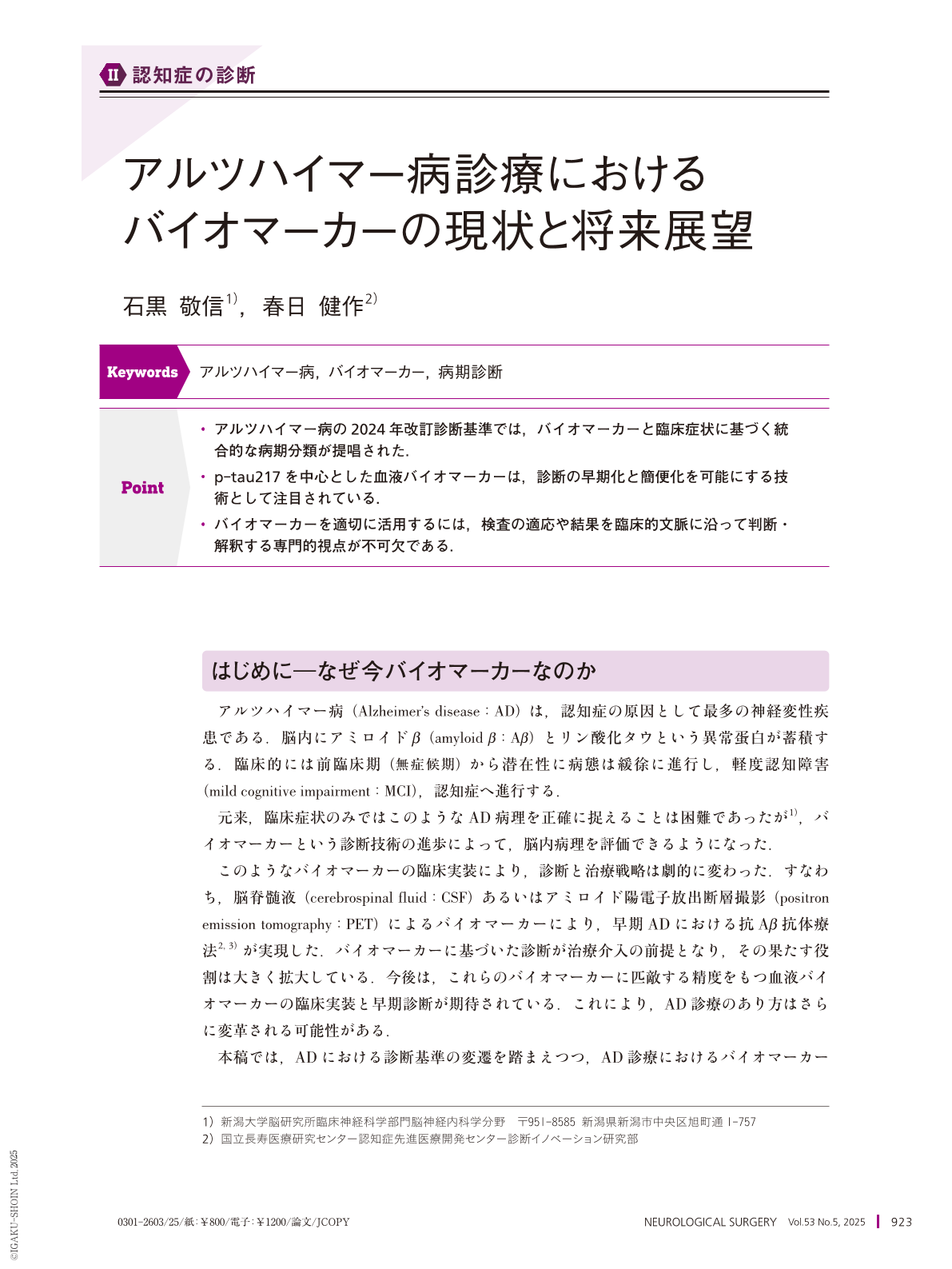Japanese
English
- 有料閲覧
- Abstract 文献概要
- 1ページ目 Look Inside
- 参考文献 Reference
Point
・アルツハイマー病の2024年改訂診断基準では,バイオマーカーと臨床症状に基づく統合的な病期分類が提唱された.
・p-tau217を中心とした血液バイオマーカーは,診断の早期化と簡便化を可能にする技術として注目されている.
・バイオマーカーを適切に活用するには,検査の適応や結果を臨床的文脈に沿って判断・解釈する専門的視点が不可欠である.
Alzheimer's disease (AD) is the most common cause of dementia, characterized by the pathological accumulation of amyloid-β (Aβ) and phosphorylated tau in the brain. Recent advances in biomarker technology have significantly improved AD diagnosis and treatment. Cerebrospinal fluid biomarkers and amyloid positron emission tomography imaging are now available in clinical settings and serve as key tools in identifying early-stage AD, especially when considering anti-Aβ monoclonal antibody therapies. In 2024, the Alzheimer's Association proposed revised diagnostic criteria that integrate both biomarker-based and clinical staging systems. This framework introduces a classification of “core biomarkers” that reflect AD-specific pathology and defines biological and clinical symptom stages. Furthermore, blood-based biomarkers, such as plasma p-tau217 and MTBR-tau243, are gaining attention as minimally invasive tools for early diagnosis and disease staging. As these biomarkers become more accessible, proper interpretation within a clinical context remains essential. In Japan, biomarker testing is currently recommended only for symptomatic individuals, and its use requires careful judgment regarding indications and relevance to the clinical setting. This review outlines the evolution of diagnostic criteria, current and emerging biomarkers, and their implications for personalized AD care while emphasizing the need for expert clinical interpretation to ensure responsible and patient-centric use.

Copyright © 2025, Igaku-Shoin Ltd. All rights reserved.


